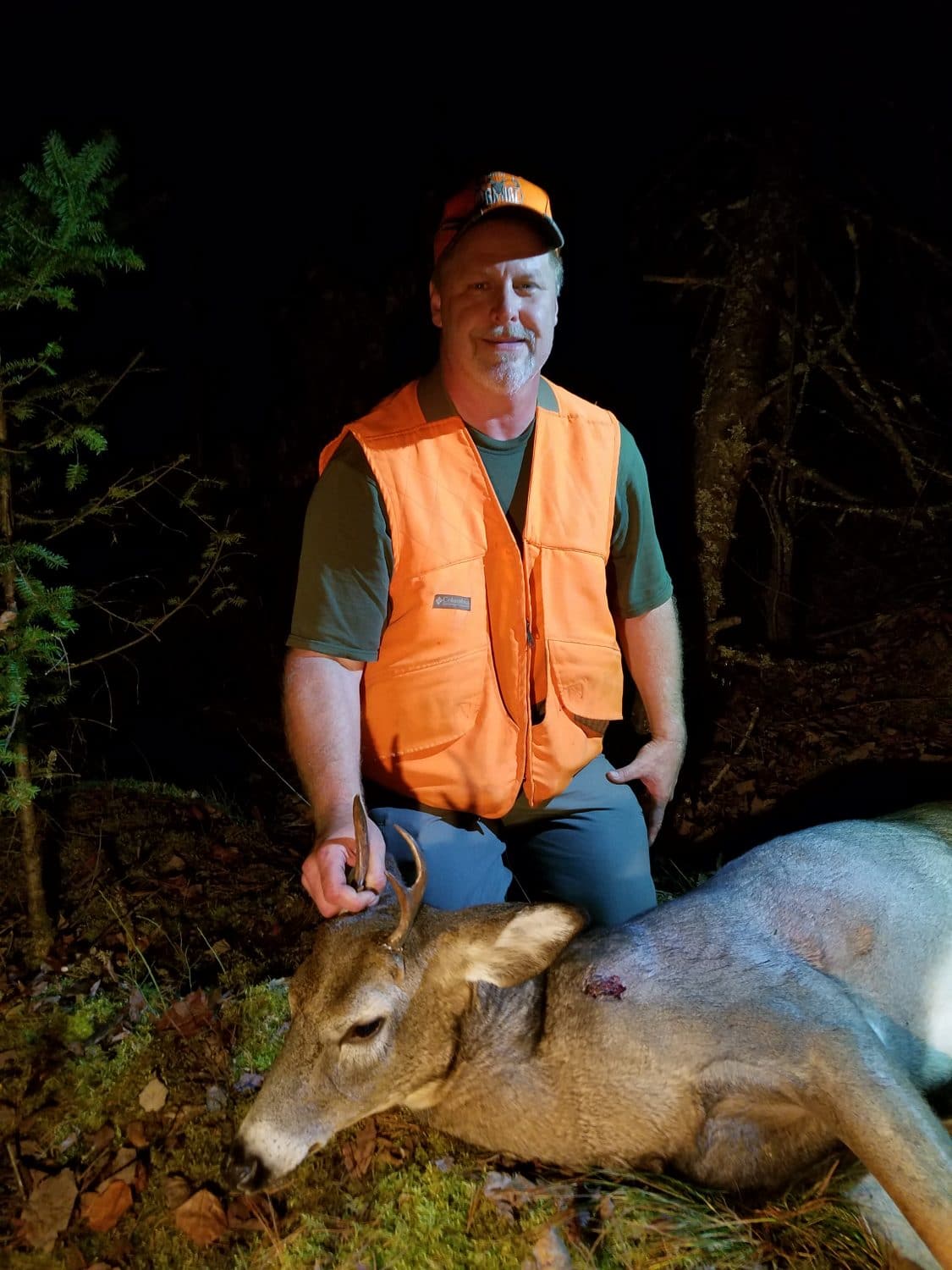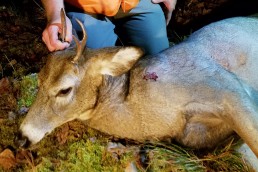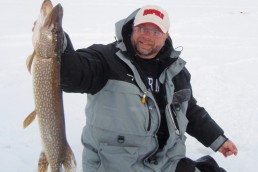Day Two in Deer Camp 2016
SHARE THIS POST
At 4 a.m. on Sunday, the second morning of our past Minnesota firearm deer hunt, the temperature was 27 degrees. Our winter fur-clad deer were getting a break from the 68-degree temps from the previous day—but not for long, unfortunately. Today’s predicted high was 71 degrees. Despite the fact that the primary breeding phase of the rut had begun three days earlier, like yesterday, after about 10 a.m. deer probably wouldn’t budge from their secluded beds until after sunset. Highs in the 50s and 60s were predicted for the rest of the week, casting a dark shadow over the rest of our hunt.
To make matters worse, for the second year in a row our deer numbers were at their lowest in the 26 years—only six per square-mile because of two severe winters and excessive wolves. From 1990 to 2014 we consistently took our self-imposed quota of four mature bucks (no does) per year. In 2015, we had continued our custom of turning down yearling and 2 1/2-year-old bucks, holding out, as usual, for older bucks, but suddenly the season ended and we headed home humbled by a new low in hunting success going back to 1945.
“Bound to eventually happen,” I had supposed.

This year we decided to lower our sights a bit and take 2 1/2-year-old bucks. And, maybe even a forkie or two, depending on early hunting success.
Smoke billowed north from our woodstove chimney on Sunday morning, meaning four hunters in our gang would again be forced to forgo hunting at downwind stand sites they had been looking forward to hunting from for weeks—spots ravaged by two big, dominant breeding bucks.
One hunter in camp considered the south wind to be perfect, however, namely me. The spot I had in mind was a well-used deer trail where it opened into the northeast corner of a 4-year-old clear-cut not smothered by second-growth poplars, which is unusual. Instead, it was red with osiers (red-bark dogwoods) and equally red suckers sprouting from sugar maple stumps, both favorite winter foods for northern Minnesota whitetails.
After three years of finding scant deer signs in this clear-cut, I was scouting last October my son John. We were surprised to discover a substantially increased number of fresh and old deer tracks there. Clumped 5/8-inch droppings, a velvet rub and some 45-inch-long buck beds in the adjacent woods revealed a 2 1/2-year-old buck now lived in the area. The most exciting discovery that day was new 1 1/2-inch-long droppings made by an awfully big buck.
One half hour before first light Sunday morning, I was stepping past those now months old droppings through deep grasses in a patch of dense alders under a moonless, starlit sky. Just ahead, about 10 yards back from the edge of the clear-cut, were the three adjacent half-grown spruce trees, between which I planned to sit. Unfortunately, I saw no deer that morning, but that’s stand hunting—you wait and wait and suddenly there one is.
At my feet was a puddle of very fresh mature-doe-sized droppings, the first fresh deer signs I had seen all morning. Without snow covering the ground and the ground being as dry as it was, fresh, clearly defined deer tracks were proving to be difficult to find. This was a serious handicap for my family of avid buck hunters and me who normally key on mature bucks by quickly stand hunting near their very fresh tracks, wherever they are found.
“If nothing else,” I decided, “with breeding now in progress—beginning November 3—keying on very fresh droppings of mature does like these can also give us opportunities to take mature bucks. Sooner or later, we’d see a doe in heat accompanied by a mature buck.”
Are you enjoying this post?
You can be among the first to get the latest info on where to go, what to use and how to use it!
The moment I arrived back in camp at noon—though I hadn’t heard a shot all morning—I knew someone in our gang had taken a buck. My plastic toboggan for dragging deer through the woods and my utility garden wagon for hauling deer to camp on the forestry trail were both gone.
Shortly, John showed up.
“Dave shot a forkie north of Acorn Mountain,” he said. “After he and Ken transfer it to Dave’s pickup at their tent, they’ll bring it here to hang on our meat pole.”
“Hey,” I said, smiling, “we’re doing all right despite the hot weather—two antlered bucks in two days is a great start. I’d better get busy making some Happy Camp hors d’ouevres (from buck hearts) and get out the kippers, sardines and crackers.”
This is traditional fare in our camp after a buck is taken.
“Ordinarily, I wouldn’t have taken this buck,” Dave explained later, “but considering how we did last year and the dismal outlook for this year, I decided I shouldn’t pass up an easy chance to harvest the makings of Polish venison sausages.”
“Good point,” I admitted. “I would have been hard pressed to pass up that buck myself.”
After lunch, the needle on our camp thermometer rested on the 70-degree mark. Like Ken the day before, Dave decided he’d better rush his buck to the locker plant 50 miles south for processing. When he arrived there, however, the building was so overloaded with deer carcasses that the owner refused to accept another. After stuffing his field-dressed deer with bags of ice, Dave returned to camp and skinned the carcass to let it cool further while the nighttime temperatures dropped into the 40s.
High in the 50s was forecasted. And after breakfast Dave headed straight home 225 miles where his deer was promptly butchered, packaged and frozen.
MWO
SHARE THIS POST
Did you enjoy this post?
You can be among the first to get the latest info on where to go, what to use and how to use it!
Dr. Ken Nordberg
Based on his 55 years of field research, Dr. Ken Nordberg has written more than 800 magazine articles, 12 books on whitetails—including the famous Whitetail Hunter’s Almanac series—five books on black bear hunting and produced Buck and Bear Hunting School videos. You may peruse his encyclopedic website with whitetail hunting tips: drnordbergondeerhunting.com, his blog: drnordbergondeerhunting.wordpress.com, or social media pages.



